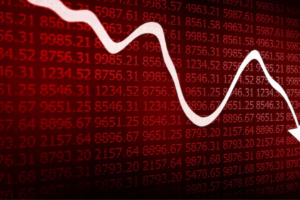The Federal Reserve (Fed) has decided to keep its benchmark interest rates unchanged for the second consecutive meeting, citing concerns over steady inflation, recession risks, and trade war uncertainties. The Federal Open Market Committee (FOMC) voted to maintain the federal funds rate in the range of 4.25% to 4.5%, while also continuing its balance sheet reduction policy.
Fed Chair Jerome Powell acknowledged that inflation has seen a slight uptick, partly due to tariffs, which could further delay interest rate cuts. However, the central bank’s official forecast still indicates two quarter-point rate cuts in 2025, providing some relief to the markets.
Following the announcement, the US stock markets rallied sharply, with the Dow Jones gaining 384 points, the S&P 500 rising by 1.08%, and the NASDAQ jumping 1.3%—driven primarily by gains in technology stocks. Meanwhile, gold prices surged to record highs, reflecting increased investor demand for safe-haven assets.
Federal Reserve Policy Decision: Key Highlights
1. Interest Rates Remain Unchanged
The FOMC unanimously decided to maintain the policy rate between 4.25% and 4.5%, marking the second straight meeting without a change. The decision was influenced by:
- Persistent inflation concerns that continue to hover above the Fed’s target.
- Economic growth moderation, reducing the need for aggressive tightening.
- Geopolitical risks, including ongoing trade tensions.
Powell stated that inflation has risen slightly, mainly due to tariffs imposed in recent months. He also warned that while two rate cuts are expected in 2025, any unexpected inflationary spikes could delay the pace of rate reductions.
2. Fed Lowers US Growth Outlook but Raises Inflation Projections
While the Fed kept its long-term economic projections stable, it made notable downward revisions to growth expectations and upward revisions to inflation estimates:
- US GDP Growth Projection: Revised downward to 1.7% from 2.1%.
- Unemployment Rate Forecast: Increased from 4.3% to 4.4%.
- Core Inflation Estimate: Raised from 2.5% to 2.8%.
Powell emphasized that the Fed’s forecast reflects a balancing act between slower economic growth and rising inflation, which justifies maintaining the current policy stance.
3. Tariffs and Their Inflationary Impact
Powell also discussed the impact of tariffs on inflation, stating that while tariff-induced inflation is likely to be transitory, it remains challenging to precisely measure how much inflationary pressure comes from tariffs versus other macroeconomic factors.
US Markets React with a Strong Rally
The US stock market reacted positively to the Fed’s decision and its signal for two rate cuts in 2025, leading to a broad-based rally across indices:
- Dow Jones Industrial Average: Gained 384 points (+1%).
- S&P 500 Index: Rose 1.08%, closing at a new all-time high.
- NASDAQ Composite: Jumped 1.3%, fueled by tech stock gains.
Big-Tech Stocks Surge
The technology sector led the rally, with major stocks posting impressive gains:
- Nvidia: +3.4%
- Broadcom: +2.8%
- Alphabet (Google’s parent company): +2.2%
- Tesla: +4.7% after securing $1 billion in fresh funding.
Investors welcomed the prospect of looser monetary policy in 2025, which could benefit growth stocks, especially in the tech sector.
Gold Prices Hit Record Highs as Investors Turn to Safe-Haven Assets
Following the Fed’s decision to hold rates steady, gold prices soared to a new all-time high of $3,050 per ounce on Thursday morning.
Why Are Gold Prices Rising?
- Persistent Inflation: Higher inflation expectations increase gold’s appeal as an inflation hedge.
- Slower Economic Growth: Investors seek safe-haven assets amid recession fears.
- Weaker US Dollar: A potential rate cut in 2025 could weaken the dollar, making gold more attractive.
Experts predict that gold could continue its upward trajectory if macroeconomic uncertainties persist.
Asian Markets React to Fed’s Decision
1. Mixed Sentiment in Asian Stock Markets
Despite the positive global market cues from Wall Street, Asian markets opened mixed on Thursday morning:
- South Korea’s KOSPI Index: Opened marginally higher.
- Hong Kong’s Hang Seng Index & China’s Shanghai Composite: Declined by 0.5%.
- Japan: Markets closed for a public holiday.
2. Chinese Central Bank Holds Lending Rates Steady
The People’s Bank of China (PBOC) decided to keep its Loan Prime Rate (LPR) at record-low levels, unchanged since October 2024. This suggests that the Chinese central bank is prioritizing economic stability over aggressive monetary easing.
Indian Stock Markets Expected to Open Higher
The Indian markets are set for a strong opening on Thursday, following positive global market cues.
- GIFT NIFTY futures traded 90 points higher at 23,074, indicating a gap-up opening for Indian equities.
- Analysts expect a broad-based rally in the Indian markets, particularly in banking, IT, and export-driven sectors.
What’s Next for the Federal Reserve?
With the Fed signaling two rate cuts in 2025, investors are closely watching economic data for clues on future policy moves.
Key Factors to Watch:
- Inflation Trends: If inflation remains above the Fed’s 2% target, the timing of rate cuts may be delayed.
- Labor Market Data: Rising unemployment rates could push the Fed to ease monetary policy sooner.
- Global Economic Conditions: Geopolitical risks and global trade policies will influence the Fed’s approach.
While the central bank remains cautious, markets are pricing in a dovish shift in 2025, which could boost equities and risk assets further.
Conclusion: Fed Holds Rates, But Markets Optimistic on Future Cuts
The Federal Reserve’s decision to maintain interest rates at 4.25% to 4.5% was widely expected, but its guidance for two rate cuts in 2025 sparked optimism across global markets.
Key Takeaways:





With monetary policy expected to ease in 2025, investors are optimistic about future market performance, but risks remain in the form of inflationary pressures and economic slowdowns.
Read more global news on niftynews











